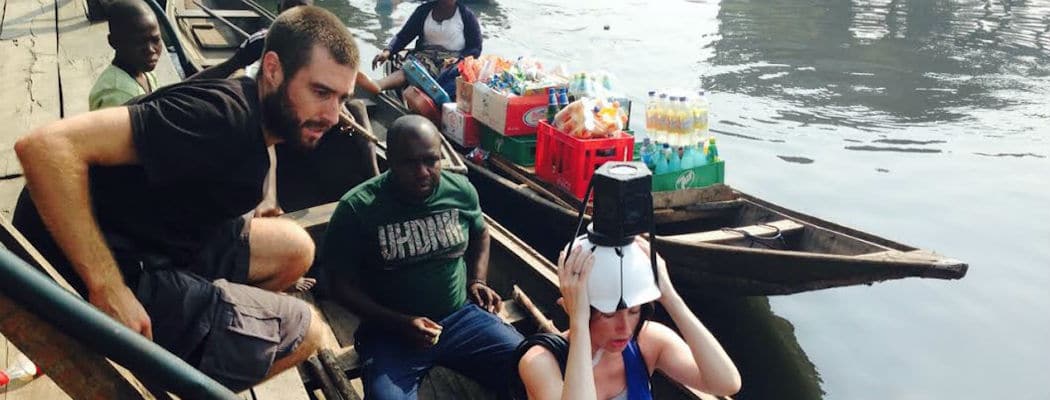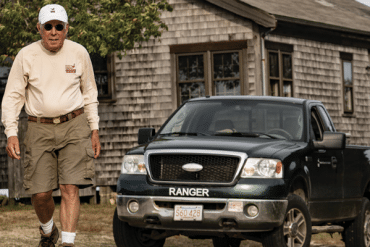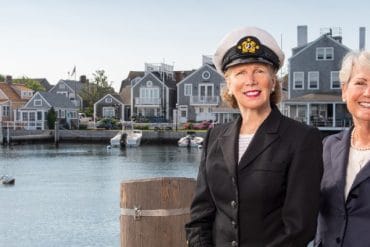The Nantucket Project makes history through Virtual Reality.
The Nantucket Project (TNP) prides itself on bringing some of the most sought-after speakers to the island each September — sometimes doing so by any means necessary. Last year, TNP made headlines by beaming in WikiLeaks founder and international fugitive Julian Assange from his quarters in the Ecuadorian embassy in London to the Dreamland Theater on Nantucket in the form of a hologram. For their fifth act, co-founders Tom Scott and Kate Brosnan and their team have something equally audacious planned. Using cutting-edge virtual reality technology, this year’s audience will be transported to Africa to witness President Obama’s address to Kenya, as if they were sitting right there in the audience.
 Obama’s speech is just one scene in a documentary that the TNP team shot this past July, which will be shown at this year’s conference. Joining forces with Stephanie Riggs, the director of Azimyth Creation Studio, TNP’s Daniel Honan, Aaron Neu, and Jennifer Hobdy traveled to Nigeria, Kenya and Rwanda equipped with a 360 degree virtual reality camera. “With virtual reality, the idea is to take people to places that are hard to get to — whether it’s physically hard or financially,” explains Daniel Honan. “You are immersed in a place that is far removed from your everyday experiences.”
Obama’s speech is just one scene in a documentary that the TNP team shot this past July, which will be shown at this year’s conference. Joining forces with Stephanie Riggs, the director of Azimyth Creation Studio, TNP’s Daniel Honan, Aaron Neu, and Jennifer Hobdy traveled to Nigeria, Kenya and Rwanda equipped with a 360 degree virtual reality camera. “With virtual reality, the idea is to take people to places that are hard to get to — whether it’s physically hard or financially,” explains Daniel Honan. “You are immersed in a place that is far removed from your everyday experiences.”
In keeping with the ethos of The Nantucket Project, the filmmakers focused on emerging innovations in Africa. “The story that we’re looking to tell is to create a new context for people to understand the creativity that is happening in Africa,” Honan explained. “Doing this in a film, we had to choose a few salient illustrations that would visually make this point.”
The team began in Lagos, Nigeria, a city of 21 million people that could soon be the largest in the world if population trends continue as they are today. There they turned their lens to Nollywood, Nigeria’s entertainment industry, which has gone from humble origins to being the second largest in the world. The TNP team even enlisted the country’s top filmmaker to co-direct one of the scenes in the documentary. “You see people doing extraordinary things with little to no resources,” says Honan. “We don’t really understand the face of the African entrepreneur, but these guys are like everyday heroes, and in some cases, Nollywood is a good illustration of that.”
 In Kenya, the filmmakers focused on innovations in transportation. The commute in Nairobi, which some call the Silicon Valley of Africa, can be between fifteen minutes and three hours depending on traffic. Back in the nineties, the bus system was plagued by strikes, and the need for efficient transportation gave rise to what are called matatus, private vans that have come to serve as an informal bus system. Today there are over 300,000 of these vans. The TNP team focused on a newly developed app that uses GPS to track each of the matatus, thus bringing rhyme and reason to the daily commute. “This is a system created totally from the bottom up,” says Honan. “In terms of what Obama was cheering on in his speech, it was this kind of Kenyan ingenuity that we were seeing.”
In Kenya, the filmmakers focused on innovations in transportation. The commute in Nairobi, which some call the Silicon Valley of Africa, can be between fifteen minutes and three hours depending on traffic. Back in the nineties, the bus system was plagued by strikes, and the need for efficient transportation gave rise to what are called matatus, private vans that have come to serve as an informal bus system. Today there are over 300,000 of these vans. The TNP team focused on a newly developed app that uses GPS to track each of the matatus, thus bringing rhyme and reason to the daily commute. “This is a system created totally from the bottom up,” says Honan. “In terms of what Obama was cheering on in his speech, it was this kind of Kenyan ingenuity that we were seeing.”
Arriving in Kenya for Obama’s speech, the filmmakers found the streets lined with billboards reading “WELCOME OBAMA.” Every newspaper documented the President’s arrival cover to cover. Security was on high alert. It was the first time in history that a sitting US president had visited Kenya. “While this wasn’t the focus of the film, we thought what a great opportunity to have it overlap with his visit, which was going to be historic in nature,” says Honan. “As far as how Obama’s speech relates to the film, his remarks were very much about what the promise is of this young country.”
Traveling around Africa with expensive and delicate camera equipment posed obvious logistical hurdles. The team insisted on carrying on all of their equipment on each flight, raising understandable alarm at security. “Every airport was an adventure,” says Honan. Their bizarre looking VR camera was intensely scrutinized at every checkpoint. Batteries were confiscated. Yet even more attention was drawn when they pulled out the camera on the streets. “If we were to take this camera out on Main Street on Nantucket, we would attract attention,” he says. “So you can imagine the attention we got in Lagos and Nairobi.”
 In Rwanda, the filmmakers focused on cultural innovation. “You say Rwanda and people think genocide,” Honan says. “But we are trying to show that this is a shining example of how a country went from that trauma to becoming one of the models of success.” They brought their VR camera to the genocide memorial and captured a moving performance demonstrating this history. Honan expects this to be one of the most dramatic experiences of the documentary shown at The Nantucket Project, as the audience will be seated right in the middle of this performance taking place worlds away. So it is that the bar gets higher and higher at The Nantucket Project, challenging audiences to think more globally and look at innovation from entirely new dimensions. One can only imagine what Tom Scott, Kate Brosnan and their team will come up with next.
In Rwanda, the filmmakers focused on cultural innovation. “You say Rwanda and people think genocide,” Honan says. “But we are trying to show that this is a shining example of how a country went from that trauma to becoming one of the models of success.” They brought their VR camera to the genocide memorial and captured a moving performance demonstrating this history. Honan expects this to be one of the most dramatic experiences of the documentary shown at The Nantucket Project, as the audience will be seated right in the middle of this performance taking place worlds away. So it is that the bar gets higher and higher at The Nantucket Project, challenging audiences to think more globally and look at innovation from entirely new dimensions. One can only imagine what Tom Scott, Kate Brosnan and their team will come up with next.






